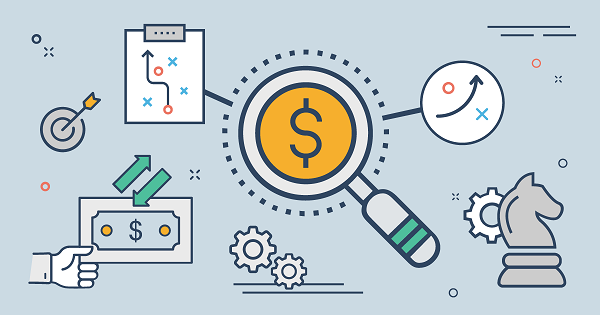
5 Reasons to Perform a Pricing Strategy Update
Here’s a simple question – is pricing strategy an important aspect of a well-functioning business? The correct answer is that of course, it is.
But, can a pricing strategy become outdated? Yes, it can.
This is exactly why a pricing strategy update is often required.
The truth is – the more dynamic a market is, the quicker a pricing strategy becomes outdated.
Let’s see what five tell-tale signs and indicators you should look out for when deciding to perform pricing strategy updates.
1. Incorrect Competitor Pricing Data
Gathering competitor pricing data is time-consuming when done manually. Besides that, it is also prone to mistakes the more prices you are tracking.
This is why an automated approach is better. There are fewer mistakes (or none at all, really), it’s significantly quicker, and it is more cost-effective when done at large scales.
When we say large scales, we mean inventories of 10,000 products or more.
Multiply the number of your products (and their variations) with the number of your competitors, how many times a day or week do they change their prices, and how much time it takes you to track a price per product.
Is it a dizzying number? We are certain it is.
The solution is to automate the price monitoring process completely.
This is what price monitoring tools are built for. If you have these types of issues that are preventing you from performing pricing strategy updates, then be on the lookout for such a tool.
2. Feeling Overwhelmed Due to the Amount of Products
Product prices are dynamic. They depend on the time of the day, season, competitive landscape, geographic area, customer segments, and other factors.
Segmenting and implementing price changes is a difficult task. Calculations, predictions, and manual labor are resource-intensive activities.
All of these processes can be automated. An example of automating your pricing strategy update process would be using a pricing strategy builder tool to set rules and conditions for product repricing.
When doing anything at a large scale, manual labor is often the most expensive option. You should have this in mind when deciding next time how to go about your pricing strategy updates.
3. Competitors Are More Proactive
You have started monitoring your competitors prices automatically. You notice they are starting to make price changes more often. You aks yourself – should you do the same?
The likely answer is that you should. You should at least experiment with pricing strategy updates.
The safe way to do this would be to use a robust pricing strategy builder, mentioned in the previous section.
Use the pricing strategy builder to set limits you are comfortable with and have a go.
Monitor the results, especially when it comes to sales and profitability, and adjust your strategy accordingly.
The more you learn about your customers, the more precise the balance you will strike between profitability and attractive prices.
4. Having a Simplified Pricing Strategy
The product price will always remain one of the most important things to focus on. However, besides pricing, online sellers are now facing many other factors that influence online buying behavior.
Retailers need to have a broader view when it comes to defining a pricing strategy and when performing pricing strategy updates.
They need to keep in mind their product’s placement in the market as well as the brand value. These aspects are always closely related to customer experience.
In the online world, the customer is mainly focused on two things: easiness when finding and buying the wanted product and how engaging the website is.
You need to provide the whole experience and therefore, having a simplified pricing strategy wouldn’t help much. Having these insights will help you to reach the final goal which is having more profitability.
5. Wrong Timing
One of the best ways to increase sales is by offering promotions. However, you will not get the desired results if the timing of the activation isn’t right.
Also, making changes in the pricing strategy must never become a tool for price discrimination.
Speaking of bad timing and price discrimination, there are some companies that we could use as a ‘learn-by-example’.
For instance, Uber, as a low-cost ride service, decided to raise the prices during the rush hour, and that decision came to action during a winter storm in New York. The timing couldn’t be more wrong, and therefore the results as well – Uber was accused of exploiting its customers.
Besides keeping track of the results that your previous promotional activities have accomplished, it could be also useful to keep an eye on the activities that the competitors are conducting as well.
For example, you can find more about trends such as what type of promotions are they using, what is the main source/medium, or how frequently are they having some promotional activity. By doing all that you will be able to get better results in the future – offering more engrossing promotions at the right time.
Conclusion
Everything said above comes back to the necessity of having a pricing strategy that is data-driven and adequate. If yours is not, that brings us to the conclusion that modifications are required.
Therefore, the first step should always be to become aware of the problem. After that, the source of the problem should be identified.
Remember, finding the right pricing strategy isn’t an easy task and it will require time, patience and probably a lot of adjustments along the way. But if you devote enough time to finding the strategy that is the most suitable for your business, and putting all the important pieces in the right places, you will be most likely to stay ahead of your competition.
What are your thoughts on eCommerce pricing strategies? Let us know, we’d be happy to hear from you!





